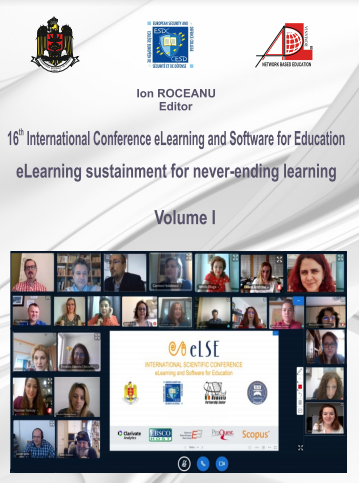SOCIO-COLLABORATIVE READING THROUGH AR-ANNOTATIONS OVER PHYSICAL BOOKS
SOCIO-COLLABORATIVE READING THROUGH AR-ANNOTATIONS OVER PHYSICAL BOOKS
Author(s): Iulia-Cristina Stănică, Alin Moldoveanu, Florica Moldoveanu, Alexandru Grădinaru, Maria-Iuliana DascăluSubject(s): Library operations and management, ICT Information and Communications Technologies, Distance learning / e-learning, Pedagogy
Published by: Carol I National Defence University Publishing House
Keywords: Digital reading; Collaborative systems; technology-enhanced learning environments;
Summary/Abstract: In a highly technologized century, the process of learning must benefit from the advantages of technology. Gamification, artificial intelligence, virtual or augmented environments or adaptive learning are just some of the trends which have evolved in the past years in the field of e-Learning. Collaborative learning is also an efficient learning methodology, where people engage together in learning actions or share one with another their knowledge and resources. Wikis, forums, social media groups are just some examples of successful collaborative learning environments. As the evolution of technology has impacted traditional learning and reading preferences of people, we must think of new ways of improving and modernizing both learning and teaching. Our current paper presents the advantages of using the latest technologies for collaborative learning, with a relevant example from the Lib2Life – Cyber-Physical Library project. Its goal is to revitalize reading and improve the learning process by using emerging technologies, restoring at the same time the popularity of libraries as safeguards of the cultural patrimony. With the help of augmented reality, digitization and optical character recognition, we developed a mobile application meant to help people annotate physical books, view annotations by other users and manage their own social-collaborative library. After registering their favourite books in the application, users can create digital annotations (text, images, videos or links) or see the existing annotations by scanning a book page with their smartphone’s camera. Annotations can be rated, commented, shared on social media or on user-configured friend groups, thus creating a collaborative environment which can be easily integrated in a great variety of domains. We present the innovative concept of annotations, which can be used as a tool for self-learning or as a collaborative tool, revolutionizing handbooks and manuals.
Journal: Conference proceedings of »eLearning and Software for Education« (eLSE)
- Issue Year: 16/2020
- Issue No: 01
- Page Range: 159-165
- Page Count: 7
- Language: English

